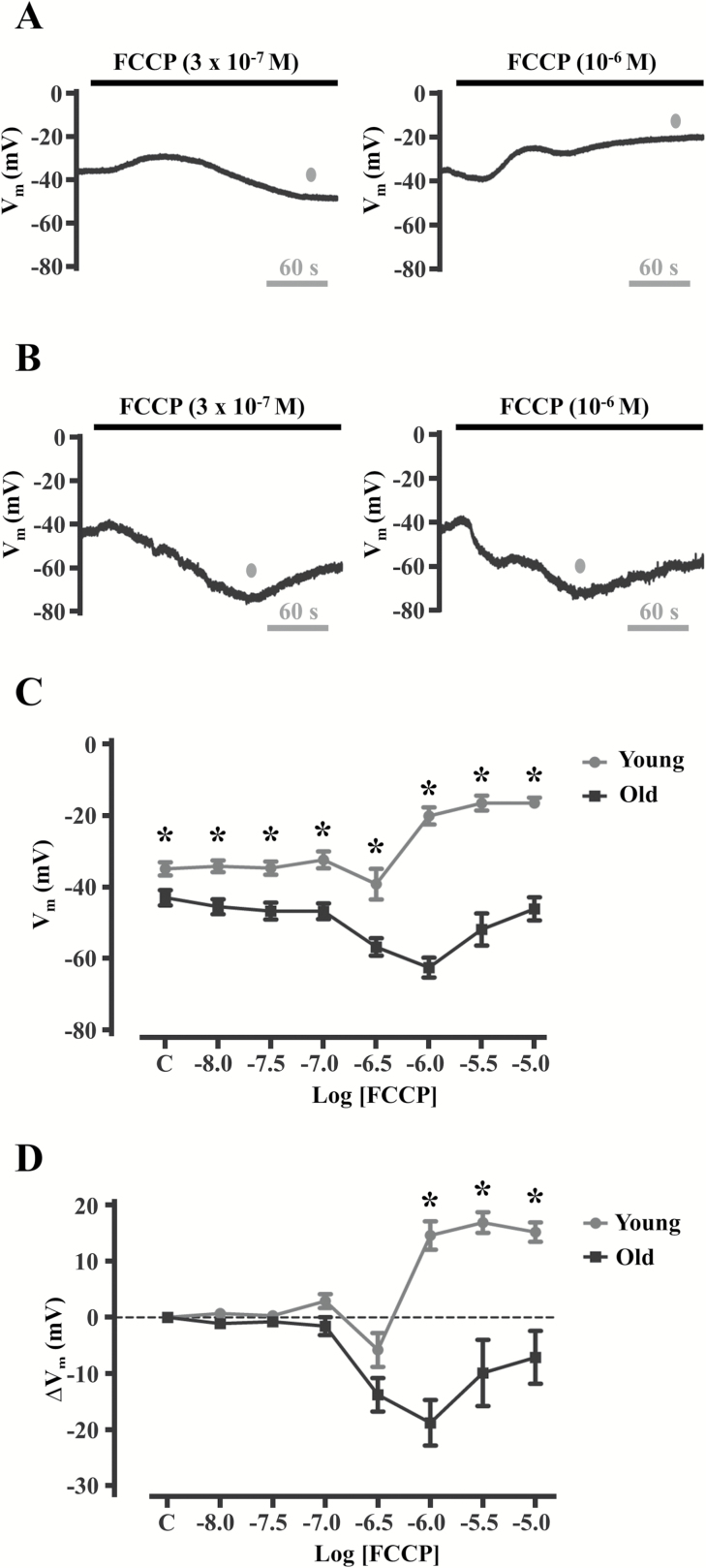Figure 4.
Aging reverses Vm responses of endothelium to mitochondrial uncoupling. (A, B) Vm recordings during 3 × 10–7 M and 10–6 M FCCP in (A) young and (B) old endothelial tubes. Note that mild hyperpolarization (<−10 mV) shifts to significant depolarization (>+10 mV) from 3 × 10–7 M to 10–6 M in young, whereas hyperpolarization responses are sustained in Old. Summary data for peak Vm (C) and changes in Vm (D) relative to control (“C”) in response to 10–8 to 10–5 M FCCP. As the traces for Figures 3A and 4A (young) and Figures 3B and 4B (old) represent simultaneous [Ca2+]i and electrical measurements, the gray dots in A and B indicate peak Vm responses that coincide with peak [Ca2+]i responses in the traces shown for Figures 3A and 3B. Endothelial tubes from young reach a maximal depolarization (ΔVm ≈ 15 mV), whereas those from old reach a maximal hyperpolarization (ΔVm ≈ −20 mV) at the same [FCCP] of 10–6 M. *p < .05 for young (n = 10) vs. old (n = 8). Additional experiments (n = 20–22 total) were performed for comparisons for 3 × 10–7 M to 10–6 M FCCP treatments between young and old [(3 × 10–7 M: young, ∆Vm: −5 ± 3 mV, n = 20 and old, ∆Vm: −13 ± 2 mV, n = 21; p < .05 vs. young) and (10–6 M: young, ∆Vm: 14 ± 2 mV, n = 22 and old: ∆Vm: −19 ± 3 mV, n = 22; p < .05 vs. young)]. FCCP = carbonyl cyanide-4-(trifluoromethoxy)phenylhydrazone.

